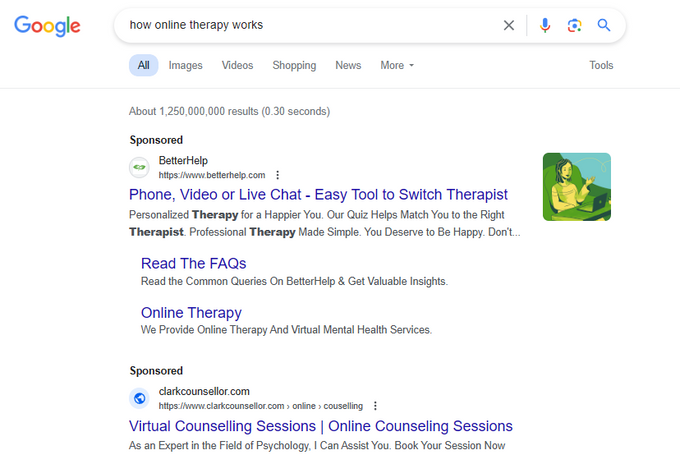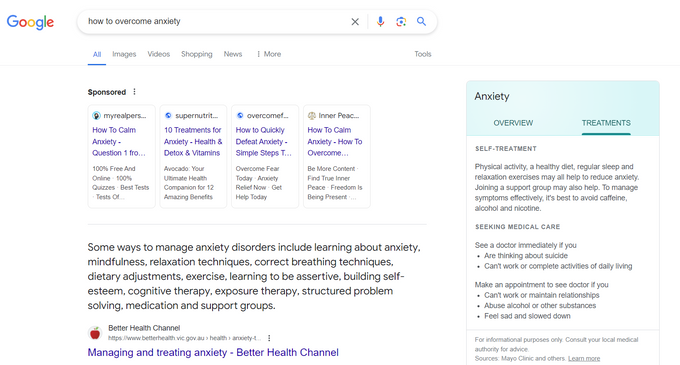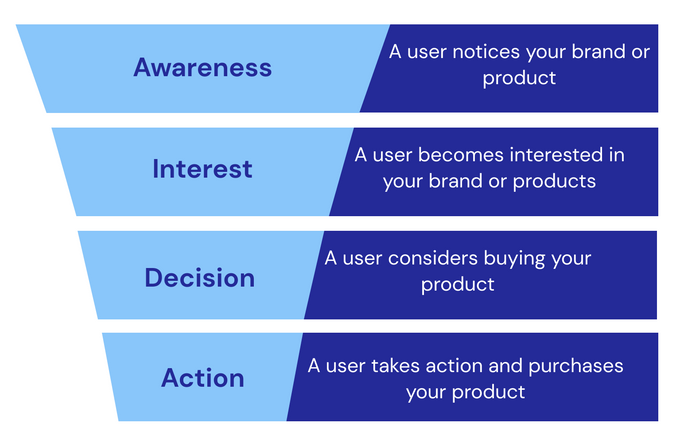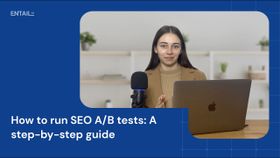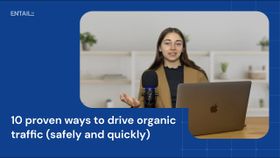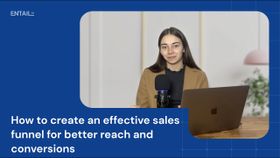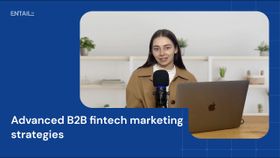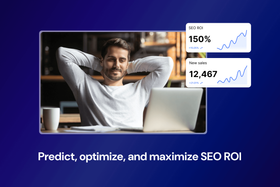Intent-based marketing: What it is and the best techniques to maximize conversions
Learn how intent-based marketing works, its benefits, and how to apply it to your business for better conversion rates.
Updated October 31, 2024

In marketing, timing is everything. You want to reach customers at the precise moment their interest peaks—when they're primed and eager to act. That's where intent-based marketing comes in.
Intent-based marketing involves using data to understand what users truly want. It's the best way to deliver satisfactory answers to search queries, increase traffic, and get consistent conversions. In this article, I’ll show you how to use intent-based marketing to accurately tailor your messaging and content to your audience.
Key takeaways
- Intent-based marketing has the highest conversion rate because it's so accurate and supports the user journey.
- The best place to leverage intent-based marketing is in your SEM, SEO, and video content.
- Relevant calls to action (CTAs) that support the user journey are the most important element of intent-based marketing.
- Understanding the type of intent can help you provide users with a relevant next step that will eventually lead them to convert.
What is intent-based marketing?
Intent-based marketing is a strategy that targets potential customers based on their online behavior and signals that indicate their intent to purchase or engage with a specific product or service. It helps you understand the user's goals and challenges so you can provide them with a logical next step that'll help solve their problem.
A prime example is Google Ads. When you search for something on Google, the ads displayed are highly relevant to your search and align with your intent.
For instance, if you search "how online therapy works," you may see ads for different online therapy service providers. Google recognizes your intent to learn more about therapy and shows you specific ads for products or pages to help you achieve that goal.
» Book a consultation to learn more about intent-based marketing.
4 types of search intent
Intent-based marketing is based on search intent or, in other words, what a user hopes to achieve with a particular search. There are four main types of intent for you to target.
- Transactional intent: Users want to make a purchase or complete a specific action. "Buy online therapy sessions" is an example of a search with transactional intent.
- Informational intent: Users want information or answers to specific questions. A search with informational intent would be "what is cognitive behavioral therapy?"
- Commercial intent: Users are researching and comparing products or services before purchasing. An example of a search with commercial intent would be "BetterHelp vs Talkspace."
- Navigational intent: Users want to find a specific website or page. Searches with navigational intent include "BetterHelp" or "TalkSpace."
» Create high-quality, expert content that targets any type of search intent.
Active vs. passive intent
Active intent refers to when someone is directly searching for something specific. A clear example is searching "Is online therapy effective for women?" This shows that the user actively wants information on that topic right now—their intent is clearly expressed through the search query itself. This active intent signifies an immediate need or goal the user wants to fulfill.
Passive intent, on the other hand, is more implicit. It occurs when someone consumes content related to a topic that suggests underlying interest, even if they didn't directly search for it. For example, if someone watches a TikTok or engages in a Facebook group about the effectiveness of online therapy for women, it implies passive intent or interest in the subject matter. While not as overt as active intent, passive behaviors can still be valuable intent signals for marketers.
Example of intent-based marketing
As I mentioned before, Google Ads is a great example of intent-based marketing in action. Here's how Google tailors their ads to user intent:
- Understanding search queries: When you search for something, Google analyzes your query to determine your intent. Are you looking to buy something or learn about a topic?
- Displaying relevant ads: Google displays relevant ads based on your intent. For transactional searches, you might see product ads directly from e-commerce stores. Informational searches could trigger ads that link to informational articles.
- Guiding users down the funnel: Companies behind these articles leverage the user's intent to shape their content. This way, the articles capture your interest and guide you further down the sales funnel.
In essence, Google Ads act as a bridge between user intent and the content they need to complete their journey.
» Solve intent-based marketing with Entail’s content strategy software.
Why is intent-based marketing important?
The main benefit of intent-based marketing is that it drives high conversion rates because users tell you exactly what they want through their searches. This allows you to provide a relevant next step, which they're likely to take.
Other benefits of intent-based marketing include:
- Helping the user complete their journey
- Better targeting and relevant messaging
- Improved user experience and engagement
- Organic, unintrusive opportunities to recommend your product
» Talk to an expert to find out how intent-based marketing can benefit your business.
Where is intent-based marketing in the funnel?
While intent-based marketing is most effective at the consideration stage, you can use it at any stage of the marketing funnel.
For example, at the top of the funnel, a user might search for general information about depression, such as its causes and symptoms. You can leverage intent-based marketing to guide this user further down the funnel by offering relevant content that answers their questions and naturally leads them to the next stage in their journey.
» Optimize user journeys across your site to streamline your marketing funnel.
How to leverage intent-based marketing for your business
To effectively leverage intent-based marketing, consider the following omnichannel strategies:
- Search Engine Marketing (SEM) and Search Engine Optimization (SEO): Start by advertising on Google, the most accessible platform for leveraging intent-based marketing. Through both SEM and SEO, tailor your content and ads to match users' specific search intent. This approach improves visibility and directs relevant traffic to your website.
- Content strategy: Develop SEO-focused content that targets specific user intents and suggests a logical next step. By structuring your website and its content to align with these intents, you create a path for users to follow, leading them from their initial search to your site.
- Content creation: Ensure that every piece of content aligns with user intent and is relevant to the overall topic and the suggested next steps. This is important for keeping users engaged and creating content that converts.
- Email marketing: Segment your email marketing efforts to target users based on their interests, which often reflect their intents. By customizing your communications to address the user’s specific needs and interests, you can increase the relevance and effectiveness of your campaigns.
- Retargeting: Engage users who have shown interest in specific topics. By displaying ads that resonate with the content they’ve engaged with, you tap into a blend of passive intent and interest, making your marketing efforts more precise.
- Video content: Create video content that addresses specific intents related to your offerings. For instance, if a video explores the efficacy of online therapy for men, it should end with a CTA, like booking a session.
Limitations of intent-based marketing
Scaling intent-based marketing across a large website with a lot of content is a major challenge. Managing numerous CTAs for every section and user journey across potentially thousands of pages can quickly become overwhelming.
Another challenge occurs because companies often prioritize the bottom of the funnel, where conversions are higher. Upper funnel stages get less attention because they typically have lower ROI. Investing resources in intent-based marketing at this stage may not yield immediate returns, as users aren't ready to convert yet.
Accurately understanding user intent can also be difficult. For example, if you take an article, ask ChatGPT what intent it targets, and compare that to the real keywords the article ranks for on Google, you'll see a difference. Google is the best and most accurate tool for that because it's based on real data.
» Overcome the limitations of intent-based marketing with Entail's CRO software.
Master intent-based marketing with Entail
Entail's conversion rate optimization software is an effective intent-based marketing solution for existing content. Similar to how Google displays relevant ads and results based on search intent, our software automatically inserts CTAs, links, and banners within relevant sections.
Our software analyzes the specific intent behind each section of an article or web page. You can add multiple tailored CTAs throughout longer pieces of content, providing logical next steps aligned with user intent at each point. It's also highly effective for generating conversions because, as we've seen from our data, the average click-through rate on these CTAs in articles is above 30%.
